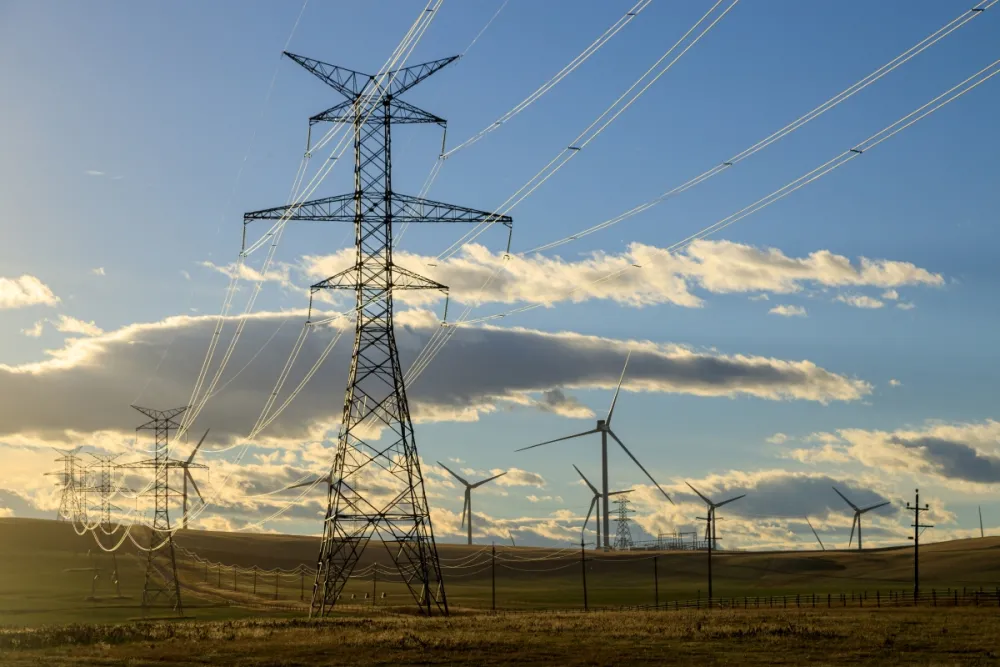EDMONTON — JASON WANG, senior analyst of the Pembina Institute’s Electricity program, made the following statement in response to the Alberta Electric System Operator’s (AESO) finalized design for the province’s Restructured Energy Market (REM).
“Earlier this year, the Alberta government said it was changing electricity regulations in order to strengthen the power grid, lower and stabilize utility bills, and encourage investment in the province. Unfortunately, the electricity market rules released today encourage more expensive means of power generation, like natural gas power plants. At the same time, it discourages new investment in wind and solar projects — the lowest-cost forms of energy generation. This means Albertans will be forced to pay more for electricity than they would if all options competed on a level playing field.
“Multiple analyses of near-final versions of REM, including those commissioned by the AESO, consistently show the changes increase electricity prices by at least 8 per cent and as high as 30 per cent.
“In fact, if changes are not phased in carefully, we could see some existing renewable energy projects put immediately into the red, resulting in the cancellation of contracts and projects shutting down early. At the same time, there would be very little investment in new renewable energy projects.
“We are also concerned that the finalized REM is currently intended to bypass the Alberta Utilities Commission’s (AUC) approvals process. AUC review is a critical mechanism that ensures new electricity regulations and changes to the market are done in a way that protects the social, economic and environmental interests of Albertans. The new rules represent a significant change to the existing market setup and should be subject to public scrutiny beyond industry engagement.
“While the new rules do provide some positive signals for energy storage, other ways to strengthen the grid are left on the sidelines, including demand-side management (DSM) and interties. DSM is the most efficient way to manage demand on the grid and has been shown in provinces like Ontario to save money for both utilities and their customers. In addition, despite substantial discussion about removing market barriers to interprovincial electricity trade, these changes have been postponed.
“Taken together, this restructured market will increase costs for Albertans, disincentivize investment in the cheapest forms of energy, and rely on a limited set of tools to strengthen the grid.
“Alberta should manage its electricity supply in a way that encourages the scale up of the lowest-cost, most readily deployable energy resources — wind and solar energy. We know from examples around the world that, when paired with grid enhancements such as interprovincial transmission, renewables help to deliver a reliable, affordable and energy-secure grid. In the last two years, the province has seen almost 11 gigawatts of clean energy projects get cancelled in Alberta due to regulatory uncertainty. At the same time, other governments in Canada and around the world are rapidly scaling up their supply of low-cost clean electricity to support their economic growth. In this way, Alberta is losing a competitive advantage in attracting new investment, jobs and tax revenues to the province.”
Quick facts
- The objectives of the Restructured Energy Market design, outlined in late 2024, are to ensure a reliable, affordable electricity system that facilitates decarbonization by mid-century.
- A key aspect of the new design involves a fundamental change to the structure of the price of power.
- Currently, Alberta’s market operates using a uniform price for the entire system where, in any given hour, all generators are paid the same price for their power regardless of their location.
- Under the new design there will be different prices for different locations, based on how much it costs to make and deliver the power, including any traffic (congestion) in the power lines. It’s analogous to paying more for a package delivery if the roads are busy. This system is called locational marginal pricing.
- This type of pricing system has been successfully implemented in several other jurisdictions. However, given the historic and ongoing lack of investment in modernizing and growing Alberta’s grid, immediately implementing the new pricing system in full (rather than phasing it in) will have an outsized impact on regions of the province with high levels of renewable energy generation. Modelling by Power Advisory has shown that these changes may make existing and new renewable projects unprofitable, especially in the regions with the best wind and solar resources that can generate the cheapest energy.
- Other changes are related to pricing and to ancillary services. In general, these changes may bring some benefits to energy storage projects, but do not sufficiently set Alberta up to modernize the electricity system with technologies like demand response, distributed energy resources, or leverage the use of cost-effective, nation-building interties.
- While the primary electricity market includes pricing for the total amount of energy produced, other attributes like flexibility and reliability — collectively known as ancillary services — are important to the grid too. For example, a new R30 payment is for facilities that can adjust their power output within 30 minutes, like batteries or gas peaker plants.
- While the REM originally contemplated changes to intertie treatment, the AESO decided to not pursue them. Interties will also not be allowed to participate in providing R30 services. Market changes could have encouraged more investment, including from the private sector Alberta’s intertie plans remain limited to eventually restoring the full capacity of the tie to B.C. and to expanding intertie exchange capacity with Saskatchewan.
Notes
Alberta’s Restructured Energy Market: Timeline and history
In 2022, the AESO identified a need to review the province’s electricity market to ensure continued reliability, as more renewables were anticipated to be added to Alberta’s energy mix over the following years. This resulted in the Market Pathways initiative, launched August 1, 2023 to gather stakeholder input on adjustments that may be needed. This initiative was originally expected to run until mid-2024.
- On August 3, 2023, the Government of Alberta separately launched a seven-month moratorium on renewable energy development, citing concerns with the sector’s impact to land use, “pristine viewscapes,” as well as reliability of the grid.
- This moratorium paused approvals for up to 118 projects, representing as much as $33 billion in investments.
On October 12, 2023, the AESO announced that instead of completing the Market Pathways initiative, the Government of Alberta had directed it to provide a report by February 1, 2024 with recommendations on potential market adjustments to improve the reliability of the grid. To meet this expedited timeline, the AESO sought feedback through an in-person, invitation-only “Executives Working Group,” instead of public engagement.
- The renewables moratorium was lifted on February 28, 2024 but added new restrictions specifically related to renewable energy development. At the time, the Pembina Institute called these new restrictions “patently unfair.”
On March 11, 2024, after receiving the AESO’s recommendation report, the Government of Alberta directed the AESO to undertake a broader market redesign, referred to as the Restructured Energy Market (REM). The AESO announced the same day that the REM would be finalized in early 2025 and be submitted to the AUC for a public hearing to determine if the market changes would be in the public interest.
On December 10, 2024, the Government of Alberta announced the REM would be implemented after 2025 for an interim period of unspecified duration without requiring AUC approval. Instead, the interim period would allow for more changes, which the AUC would approve at some point for finalization.
On April 10, 2025, the Government of Alberta announced that instead of being fully finalized later this year in terms of design, rules and legislation, the REM will be finalized in early 2026 for implementation in mid-2027.
Contact
Hanneke Brooymans
Senior Communications Lead, Pembina Institute
587-336-4396
Background
Blog: Alberta is swimming against the tide on clean electricity
Report: Creating (Un)certainty for Renewable Projects
Report: I'll Have What They're Having




